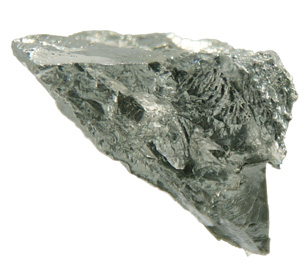Chromium
| EPA Maximum Contaminant Level (MCL) |
0.1 mg/L |

Chromium exists in two forms: trivalent chromium, which not only is not toxic but is considered an essential nutrient for humans, or as hexavalent chromium, which is classed as a carcinogen by the EPA.
Hexavalent chromium enters the water supply mainly as the a waste product of industry. It was a commonly used industrial chemical until the early 1990s, and is still used in some industries, such as chrome plating and the manufacturing of plastics and dyes.
Those who saw the 2000 film “Erin Brockovich” will remember hexavalent chromium, also known as chromium-6, as the chemical spreading in a plume beneath the town of Hinkley, Calif., from a disposal site run by Pacific Gas & Electric. The company ultimately paid $333 million in damages for the contamination after a class-action lawsuit.
Fortunately, the occurrence of excessive chromium is relatively infrequent. Or, at least that was believed to the the case until 2010 or so when news stories revealed that it is more prevalent than previously believed.
Health Effects of Chromium
According to the EPA, “exposure to chromium-6 could result in allergic dermatitis (skin reactions)” and studies suggest that it is a likely human carcinogen.
Water Treatment for Chromium
Removal from drinking water is accomplished by reverse osmosis (90% to 97%) or by distillation. For larger quantities, the best treatment for CR-6 is strong base anion exchange, which must be regenerated with caustic soda.
Source: EPA, Photo: images-of-elements.com
Site Index
Filtration Systems
- Aeration for Iron & Sulfide
- Backwashing Filters
(whole house & well units)
- Chlorine & Chemical Injectors
- Countertop Water Filters
- Emergency Filters
- Garden Hose Filters
- Reverse Osmosis, Residential
- Reverse Osmosis, Commercial
- Shower Filters
- Specialty Filters
- Ultraviolet Systems
- Undersink Filters
- Water Softeners
- Whole House Filters
Cartridges
Parts
- Replacement Parts
- Faucets
- Filter Media
- Fittings
- Housings
- O-rings
- Pumps
- Pura UV
- R.O. Parts
- R.O. Tanks
- R.O. Booster Pump
- VIQUA UV